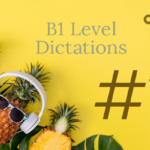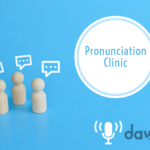Welcome back to Grappling Grammar! In our previous post, we went over the rules and use of many of the prepositions of place and this week we are going to continue with some more grammar, the purpose and the use of the passive voice.
The passive voice is often used to change the focus of a sentence and when we don’t wish to mention who or what is doing the activity or if we do not know who or what has done the activity. This form is the opposite of the active voice, which we tend to use more commonly on a day to day basis. When using the passive voice in English, we need to take care of the structure we use to make sure that it has been used correctly. In order to better help you with the use of the passive voice, here is a step by step guide on how to use the passive voice with some examples here:
- Identify the subject (the doer of the action) and the object (the receiver of the action) in the active sentence.
- Place the object of the active sentence at the beginning of the passive sentence.
- Use the appropriate form of the verb "to be" (e.g., is, am, are, was, were) followed by the past participle of the main verb. The past participle is often formed by adding "-ed" to regular verbs or following irregular conjugation patterns.
- (Optional) Include the subject (or omit it if not relevant or known). If included, the subject typically follows the verb "to be" and is preceded by "by."
Let's illustrate this process with examples:
Active sentence: The chef prepares delicious meals. (El chef prepara platos deliciosos)
Passive sentence: Delicious meals are prepared by the chef. (Se prepara platos deliciosos el chef)
In this example:
- Subject (active): The chef
- Object (active): Delicious meals
- The object (delicious meals) becomes the subject in the passive sentence.
- "Are" (appropriate form of "to be") + "prepared" (past participle of "prepare") is used.
- The subject "the chef" is included, preceded by "by."
Active sentence: They built a new bridge over the river. (Construyeron un nuevo puente por el río)
Passive sentence: A new bridge was built over the river. (Se construyó un nuevo puente sobre el río.)
In this example:
- Subject (active): They
- Object (active): A new bridge
- The object (a new bridge) becomes the subject in the passive sentence.
- "Was" (appropriate form of "to be") + "built" (past participle of "build") is used.
- The subject "over the river" is included, preceded by "by."
Active sentence: The company will launch a new product next month. (La empresa lanzará un nuevo producto el próximo mes.)
Passive sentence: A new product will be launched by the company next month. (Se lanzará un nuevo producto el mes que viene por la empresa.)
In this example:
- Subject (active): The company
- Object (active): A new product
- The object (a new product) becomes the subject in the passive sentence.
- "Will be" (appropriate form of "to be") + "launched" (past participle of "launch") is used.
- The subject "next month" is included, preceded by "by."
Remember, not all active sentences can or should be transformed into passive ones. The decision to use the passive voice should be based on factors such as emphasis, clarity, and stylistic preference.
If you found this post interesting and want to practise more, then download the PDF of this post with exercises here.



